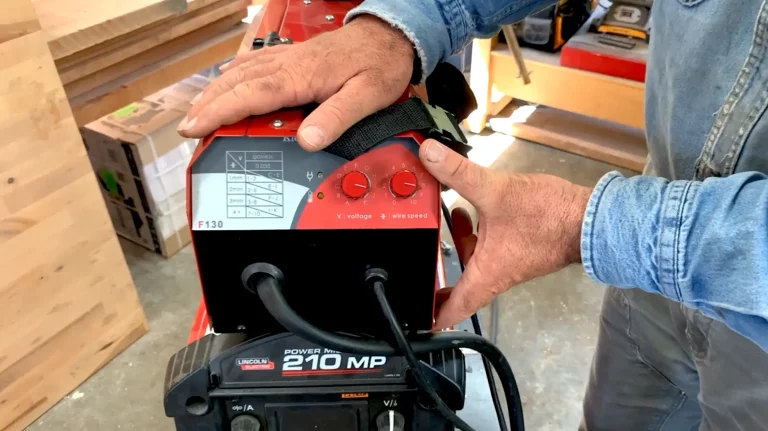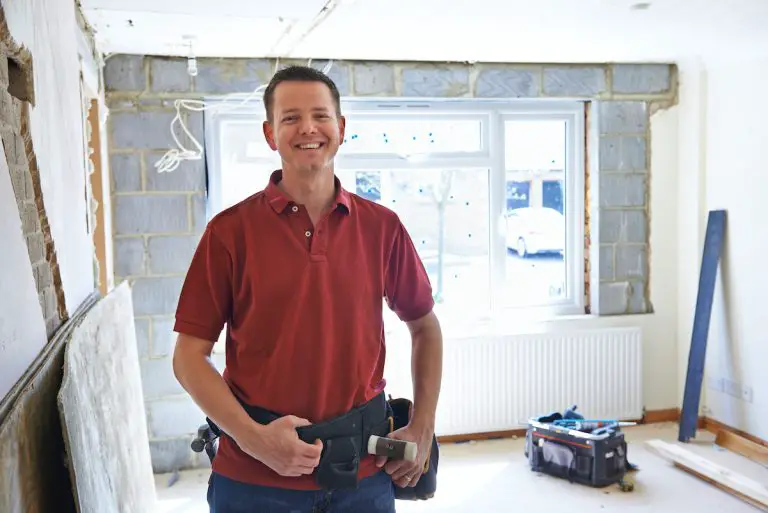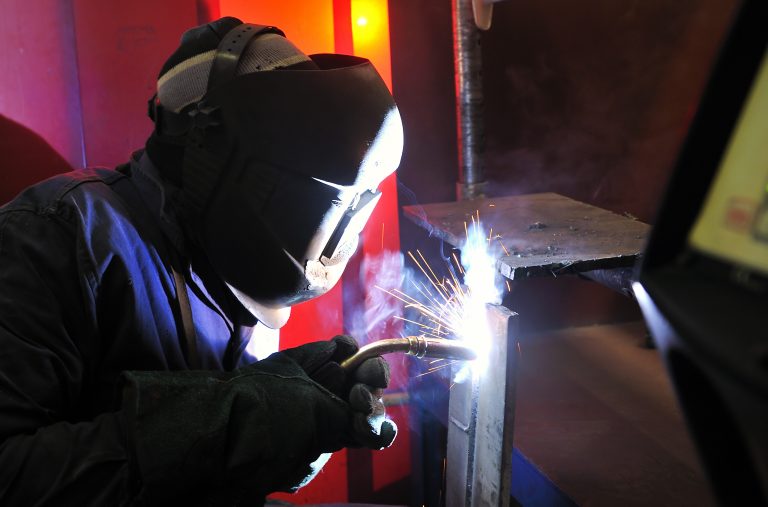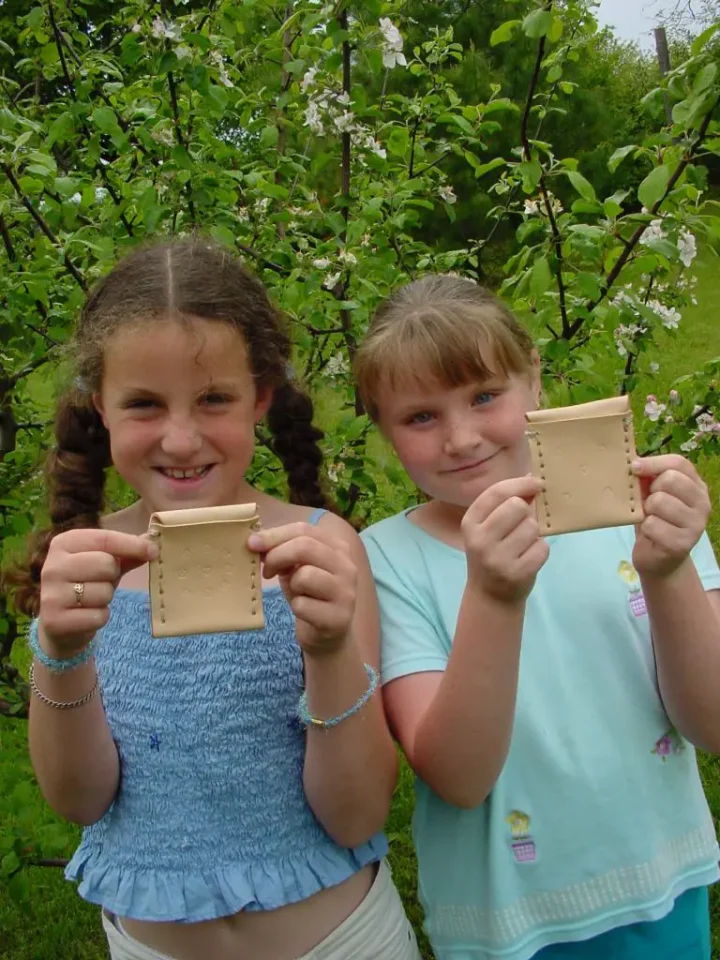
It wasn’t until the third or fourth time I introduced elementary school kids to tools and woodworking in the classroom that I noticed a pattern. Every single young child seems to have some interest in building things. No exceptions. It must be hard-wired into humans from the start, though that wiring certainly is fragile for some people. This seemingly small observation is worth remembering because there’s so much to be gained when kids engage their minds, hands and hearts building things of their own devising using tools. If you’re interested in boosting the creativity and self esteem of a child in your life, then consider encouraging some toolbox time, as you’ll see.
Do you have a tool phobia? Don’t let that scare you. The main thing is that the work be your child’s own idea, that it involve simple, manual, non-digital work, and that it takes place in a supportive framework created and encouraged by you. It’s not a lot of trouble, but without this kind of start, kids and tools rarely make lasting friendships.
Best-Kept Secret Parenting/Grandparenting
My five “kids” now range in age from 34 to 17 years old as of this writing, and of all the activities I made available to them outside of school, I consider their time with tools to be the most fruitful because it has made such a big difference in their lives. And I’m not saying this just because I’m a tool guy, either. It’s all about balance. In a world where kids’ lives become so full of orchestrated, preplanned activities (or unorchestrated, unsupervised screen time) it’s good to reserve time slots for creative opportunities where children can get excited about their own ideas, figure out how to make them happen on a practical level, and bring that vision to reality under their own steam in a non-digital way.
This isn’t about training for a trade, though the start you make now may lead your kids in that direction. That’s great if it happens, but it’s not the main goal. Give a kid a toolbox (put their names on each one), fill it with real, durable tools, and watch them take one step closer to becoming a more confident, capable human being. The little guy below is one example. That’s our Joseph, introduced to hands-on tools. Now 28, Joseph looked back on his introduction to tools fondly as he managed field crews in the construction and landscaping industries: “None of the young people who started with me know anything at all about tools and it shows”, Joseph mentioned to me recently on a video call. “I’m way ahead of them all because of the things I built growing up.”
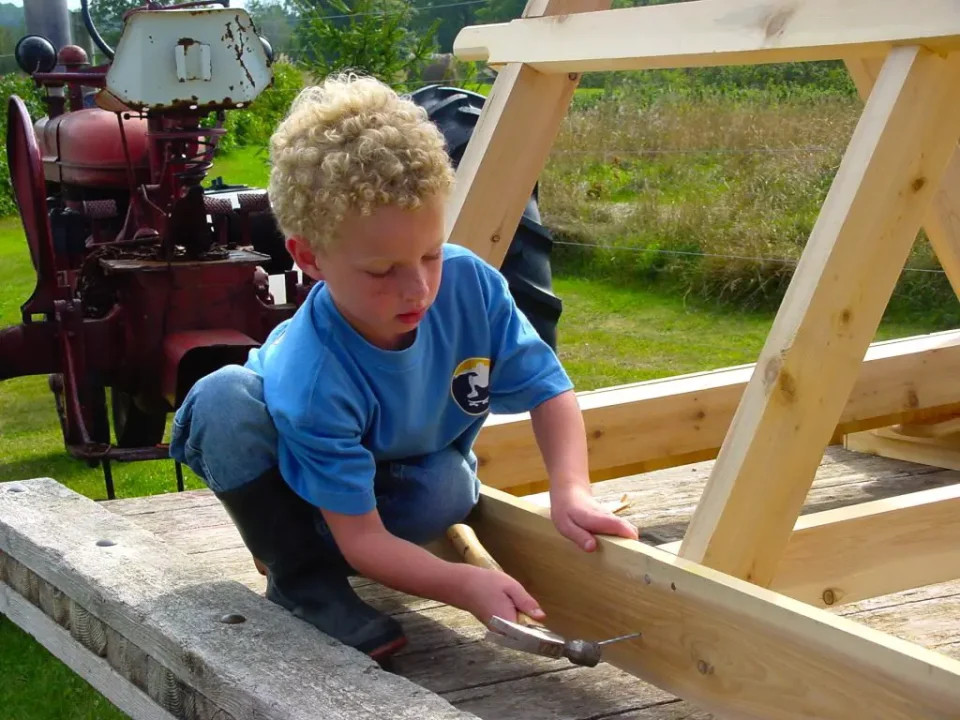
The Tools
Kids love to own things, and that’s an excellent sentiment to harness when introducing a youngster to tools and how to use them. I started by handing out toolboxes whenever my kids began expressing an interest in making things. This is a great time to start building a sense of tool ownership and care by using name labels. My Dymo labeling tool gets a hefty workout whenever new toolboxes come into the house, which happened fairly often. Whenever I buy a hammer, screwdriver or pliers for a child’s present, I figure it’s better than yet another kid-grade plastic trinket or bobble toy that’ll break in no time. Kids deserve top-quality tools for two reasons. First of all, cheap tools perform poorly and lead to disappointment. This translates into a drain on self-esteem and the mistaken self-belief that a kid is somehow no good at working with their hands. Nonsense. The second reason to buy good tools for kids is durability. Excellent tools need only be bought once in a lifetime. Every kid has the potential to be creative in a physical way, and this potential needs to be nurtured with tools that actually do what they claim they can do.
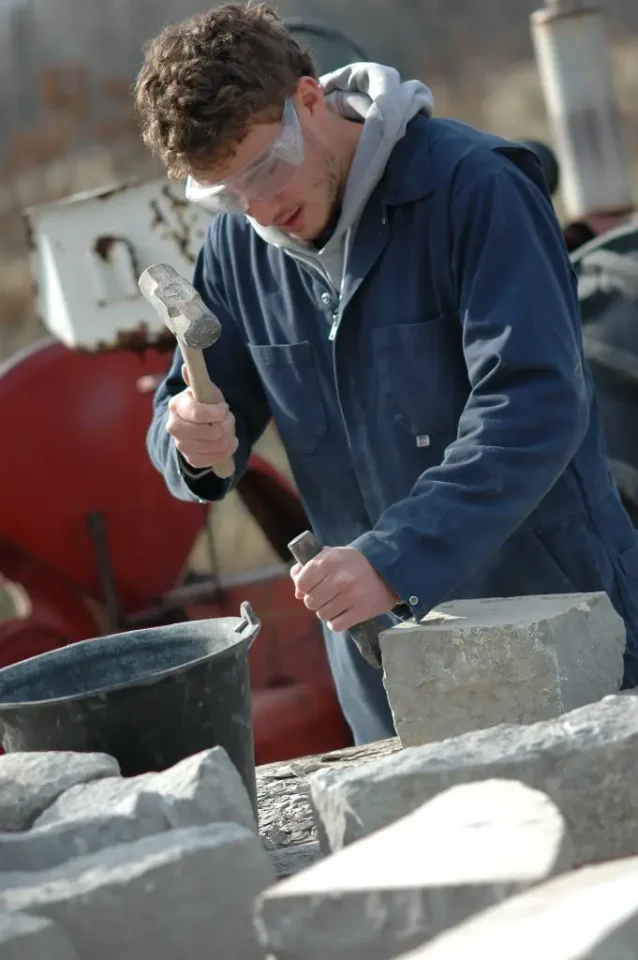
The Work
The best projects are ones kids choose for themselves. Never nag a child to make something, and never suggest a particular project too firmly. That defeats the purpose. Your job as a mechanically-supportive adult is to offer advice, demonstrate basic techniques, and set limits on what can and can’t be done safely. When my grandson, Noah, was 7 years old, he loved to pound nails into one particular stump I parked outside the shop whenever he was visiting. That’s something he could do unattended. Joseph, the guy making the chicken house above, did the same thing with a piece of plywood. It was soon riddled with roofing nails, completely covered in metal, and it became his ” shield”. The metal sheathing was to ward off “flaming bad guy arrows”, according to Joe. My oldest son, Robert, was heavily into making elastic band guns at one time. As I’ve mentioned before in previous articles, my daughter Katherine, when she was 8, loved making duct tape aprons and hats and wallets out of the stuff. One productive Saturday she used $40 worth of duct tape boosting her wardrobe before I noticed. Jacob, at 2 years old, began his tool career by pounding plastic “nails” on his Fisher-Price nailing set.

The Philosophy
Make room for kids’ craft sessions in your own workspace, and if you don’t have a space yet, maybe now’s a good time to change that. Whatever the case, expect a kid-generated mess, though don’t let it go without comment. The main value of having kids in the workshop is the lessons it teaches them, not necessarily the things they make. Cleanliness and order are good lessons to start with. Explain how to clean up after a work session and why. Demonstrate the value of good tools and how to maintain them. In fact, over-maintain if you have to, just to make a point. Oil pliers, keep screwdrivers clean, protect saw teeth with plastic guards, and teach kids to keep an organized toolbox.
While it’s important to set safety limits on the type of tools that can be used, small cuts and injuries aren’t the end of the world. Relax. Don’t sanitize the building process to the point where it’s completely free of every conceivable danger. Working with your hands involves risk. That’s true for all of us. Define the risk, explain how to work safely, monitor kids’ performance, make them wear safety equipment when needed, then get the band-aids ready. Way too much over-emphasis is placed on safety, to the point where the so-called hands-on activities don’t resemble anything of reality at all. A great many school shop programs have been discontinued precisely because the adults in charge are much too afraid of danger (and perhaps lawsuits).
Cowardice is one reason teaching kids to enjoy the process of working with real tools fell out of favour decades ago. And that’s too bad, especially when you consider how many adults are now working at a desk when they really might prefer the good money and practical challenge of something more hands-on. And how many times have you heard about the shortage of skilled trade workers, yet wonder why this old lament never seems to go away? The problem is a cultural bias that directs young people into the trades only as a last resort, after academic pursuits have been ruled out. I hope it’s not too much to expect that pleasant, childhood experiences with tools might help change the second-class rating of manual trades. Perhaps I’m dreaming. But even if I am, mixing kids and tools is still worthwhile because it’s so much fun. And that’s reason enough for me.
Getting Started With Kids
Since teaching the value of organization is one of the most important workshop lessons, always start your kids’ education with a toolbox. All-metal models are worth buying, as are plastic ones with metal hinge pins and clasps. Avoid inexpensive plastic boxes, especially the ones with pinless hinges that are simply flexible pieces of plastic. These are destined to fail and they do, devastating the hearts of little owners in the process. How would you feel if the door of your brand new car broke off in the driveway? That’s the equivalent of toolbox lid failure in the eyes of a kid. Remember, you’re building confidence as well as the start of a lifelong tool collection. Only buy items capable of proving that durability is real.
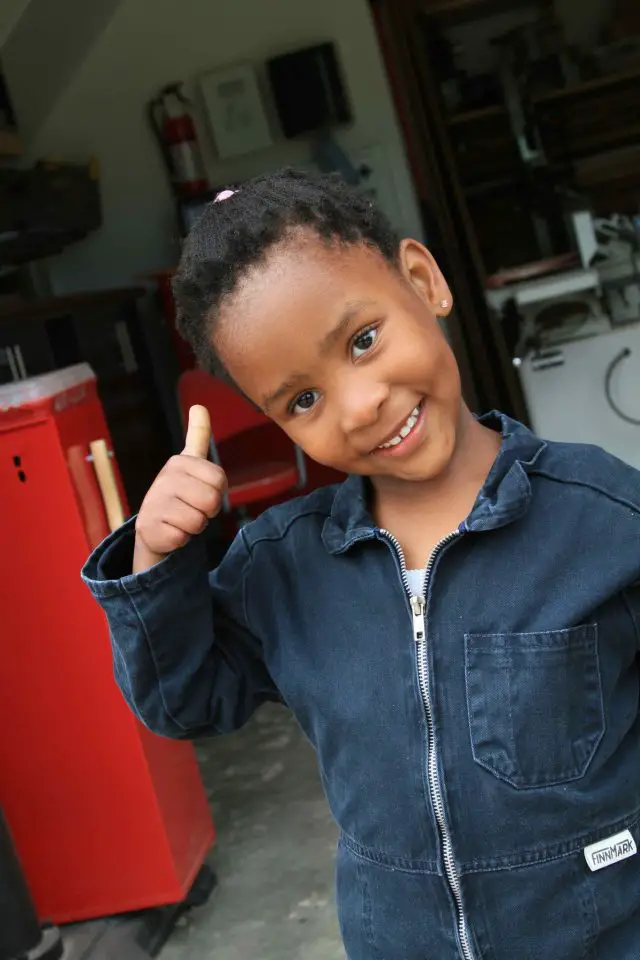
As for tools, you’ll need two kinds: those that kids can have and use right away without help, and those that they technically own but only get to use with your help. Unrestricted tools include a small hammer (5 oz. is good for smaller children; 8 oz for kids over 7 years old) and some screwdrivers. Square-tipped Robertson drivers are best since they’re easiest to keep engaged in screw heads. Get the kind with the easy-to-grab, rubber grips. Stubby-handled models are best for children under 5 years old. Don’t bother with slot or Phillips screwdrivers until your kids have a real need for them. These tip designs demand more skill to use, with no corresponding benefit as far as a teaching tool. Add some stout carpenter’s pencils, an adjustable wrench and a few small spring clamps to the collection as gift-giving occasions arise. Safety glasses and ear muffs (available in child sizes) should be added to the tool collection before any need for them actually arises. Make health and safety a visible part of the discipline of manual labour.
Restricted tools include a small Japanese hand saw (get some plastic guards to protect the teeth), a utility knife with retractable blade (the kind that takes 3/4-inch wide blades is best in my book) and a 12-foot tape measure. The sharp edges of any metal tape measure can cause cuts if it’s retracted against skin. Keep this tool in the restricted class until kids become experienced 8 or 9 year old apprentices. One of the best tools you can get for children to shape wood with is a spokeshave. It allows ribbons of wood to be removed from a chunk of lumber in a satisfying way, yet the blade is almost completely enclosed.
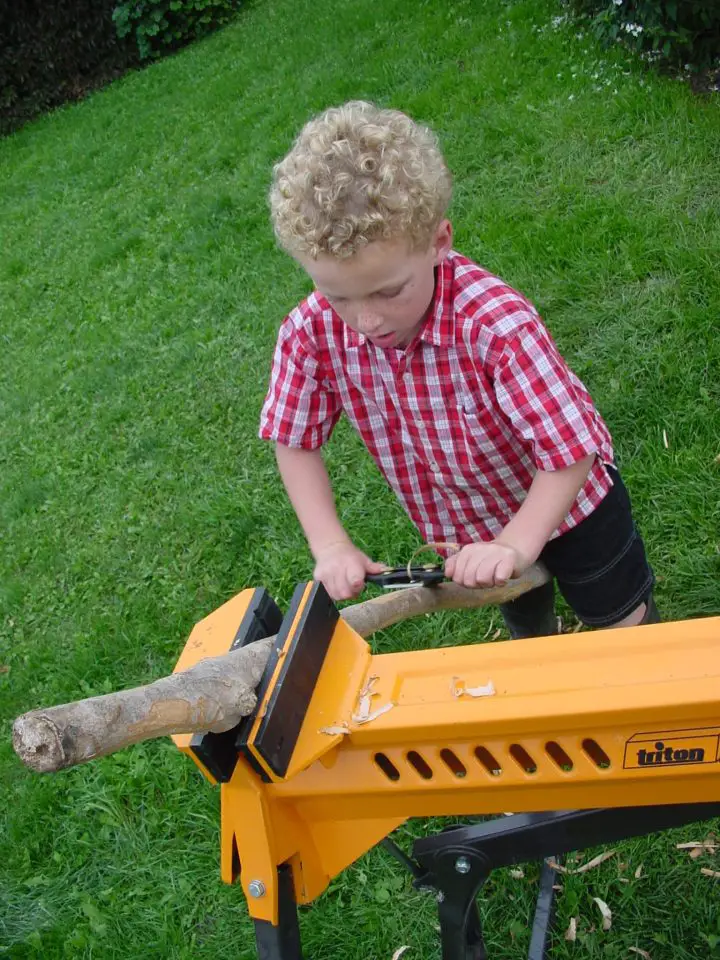
Workshop supplies are at least as important as tools, and the popular ones at our house include three kinds of tape (electrical, masking and duct); carpenter’s glue; 5 minute epoxy (for kids older than 10); 2 inch finishing nails; assorted lengths of #10 Robertson wood screws; and lengths of dowel (1/4-inch to 1-inch in diameter). If you don’t have your own workshop that generates wood scraps, consider buying a bundle of cedar shingles. They’re soft, thin and can be used by kids for making small buildings, decorative plaques, boxes and countless other things.
Although I certainly don’t believe in letting kids do whatever they want as they grow up, I have found that the best workshop lessons happen when youngsters tap into their own vein of enthusiasm to make items that address their personal needs. What do your kids wish they owned? Instead of buying things, let their needs fuel project activities. Popular building campaigns at our house have included a Game Boy lamp, wooden light sabers, ballet toe shoes made of duct tape, a Barbie dress made of an old work sock, a wood-and-stone toad house for the garden, boomerangs, archery bows, a bicycle carrier made from a plastic ice cream container, a duct tape tool belt, a wooden treasure box, wooden ducks. Your job as workshop parent isn’t so much to suggest a project as to be technical adviser and tutor when ideas start flooding in. And believe me, they will.







